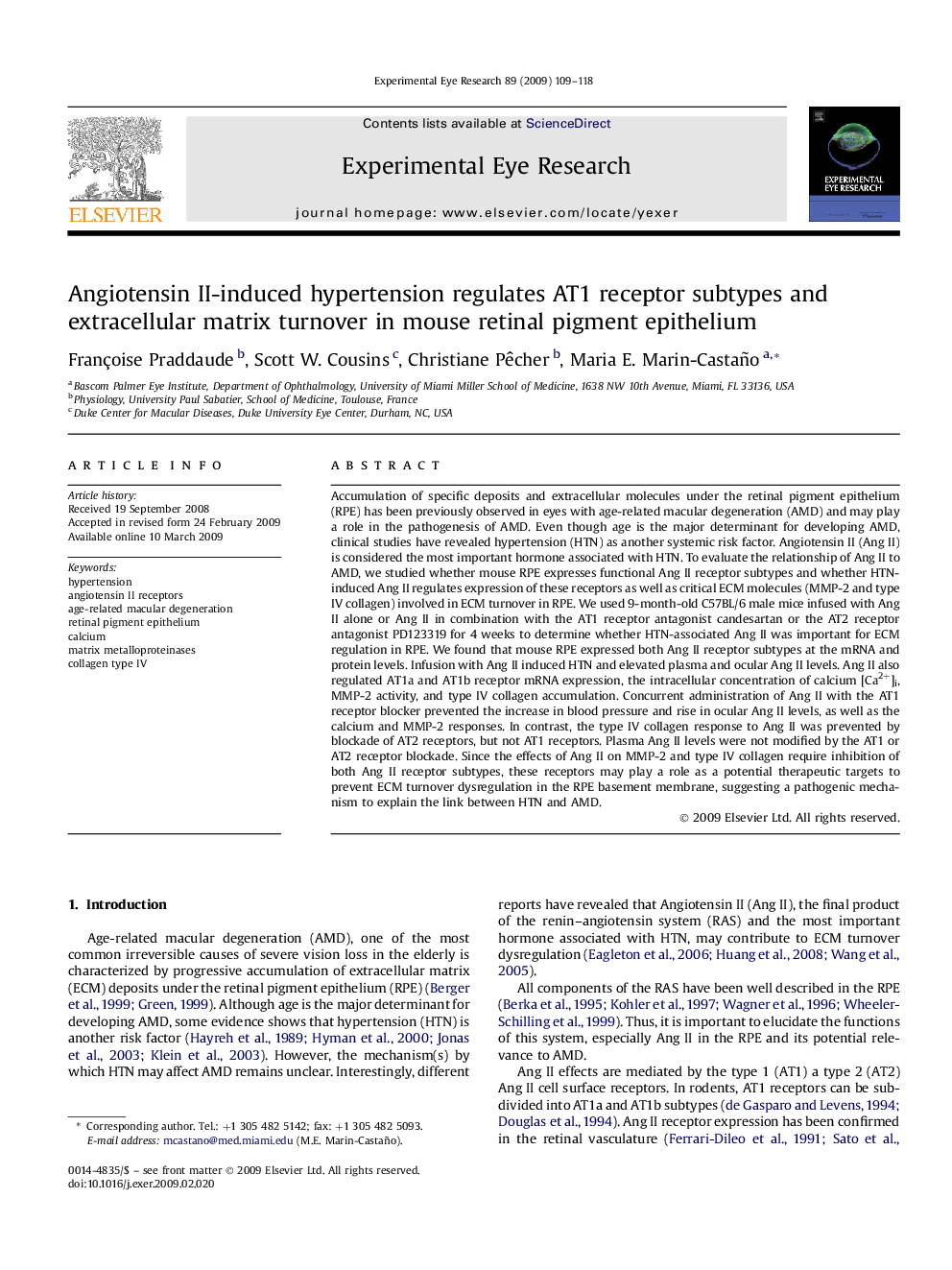| Article ID | Journal | Published Year | Pages | File Type |
|---|---|---|---|---|
| 4012452 | Experimental Eye Research | 2009 | 10 Pages |
Accumulation of specific deposits and extracellular molecules under the retinal pigment epithelium (RPE) has been previously observed in eyes with age-related macular degeneration (AMD) and may play a role in the pathogenesis of AMD. Even though age is the major determinant for developing AMD, clinical studies have revealed hypertension (HTN) as another systemic risk factor. Angiotensin II (Ang II) is considered the most important hormone associated with HTN. To evaluate the relationship of Ang II to AMD, we studied whether mouse RPE expresses functional Ang II receptor subtypes and whether HTN-induced Ang II regulates expression of these receptors as well as critical ECM molecules (MMP-2 and type IV collagen) involved in ECM turnover in RPE. We used 9-month-old C57BL/6 male mice infused with Ang II alone or Ang II in combination with the AT1 receptor antagonist candesartan or the AT2 receptor antagonist PD123319 for 4 weeks to determine whether HTN-associated Ang II was important for ECM regulation in RPE. We found that mouse RPE expressed both Ang II receptor subtypes at the mRNA and protein levels. Infusion with Ang II induced HTN and elevated plasma and ocular Ang II levels. Ang II also regulated AT1a and AT1b receptor mRNA expression, the intracellular concentration of calcium [Ca2+]i, MMP-2 activity, and type IV collagen accumulation. Concurrent administration of Ang II with the AT1 receptor blocker prevented the increase in blood pressure and rise in ocular Ang II levels, as well as the calcium and MMP-2 responses. In contrast, the type IV collagen response to Ang II was prevented by blockade of AT2 receptors, but not AT1 receptors. Plasma Ang II levels were not modified by the AT1 or AT2 receptor blockade. Since the effects of Ang II on MMP-2 and type IV collagen require inhibition of both Ang II receptor subtypes, these receptors may play a role as a potential therapeutic targets to prevent ECM turnover dysregulation in the RPE basement membrane, suggesting a pathogenic mechanism to explain the link between HTN and AMD.
